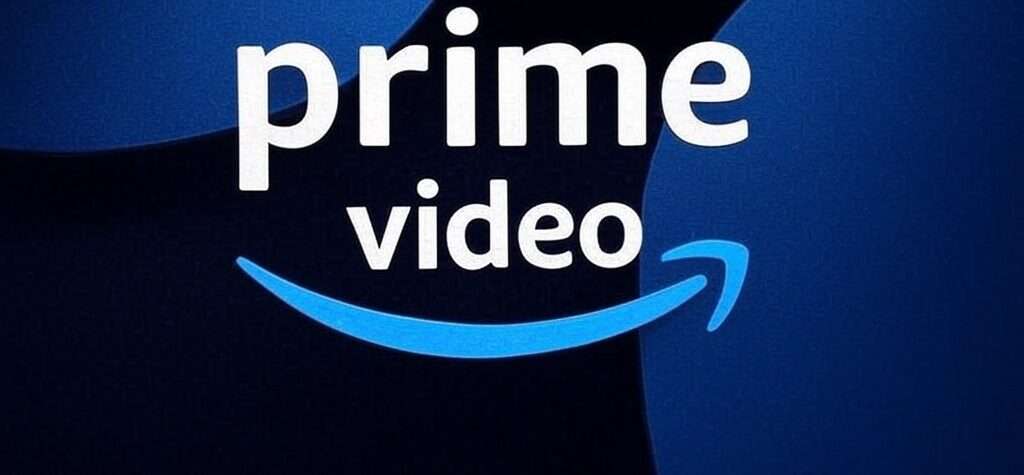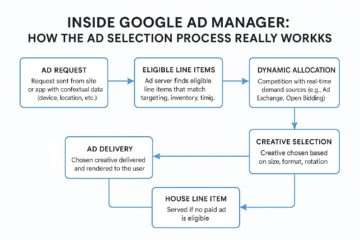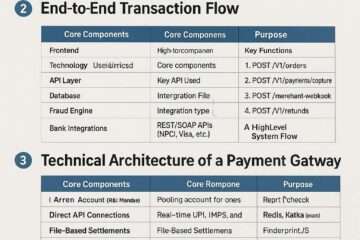

Amazon Prime Video’s decision to introduce advertisements for its subscription-based customers marks a significant shift in the streaming landscape. Starting June 17, 2025, in markets like India, Prime Video will include “limited” ads in its movies and TV shows unless subscribers pay an additional fee for an ad-free experience—Rs 699 per year or Rs 129 per month on top of the existing Rs 1,499 annual Prime membership. This move aligns Amazon with other streaming platforms like Disney+ Hotstar and Netflix, which have adopted ad-supported tiers to diversify revenue streams. However, it raises questions about its impact on Connected TV (CTV) advertising, consumer sentiment, attention spans, and whether this constitutes exploitation of loyal customers. This article explores these dimensions in detail, offering a balanced view of the implications.
Amazon Prime Video’s Ad Integration: A New Era for CTV Advertising
Amazon’s introduction of ads on Prime Video is poised to reshape the CTV advertising ecosystem. CTV, encompassing streaming platforms viewed on smart TVs, streaming devices, and gaming consoles, has emerged as a dominant channel for advertisers due to its growing audience and precise targeting capabilities. With Prime Video’s massive reach—115 million monthly active users in the US alone and over 167 million globally—Amazon is injecting significant ad inventory into the CTV market.
Impact on CTV Advertising
- Increased Ad Inventory and Market Growth:
- Amazon’s entry into ad-supported streaming amplifies the CTV ad market, which is projected to account for nearly all TV ad spend growth in 2024. Prime Video’s ad-supported tier, reaching 80% of US subscribers in 2024, adds substantial scale, attracting advertisers seeking premium, engaged audiences.
- The platform’s integration with Amazon’s Demand-Side Platform (DSP) enables advertisers to leverage first-party retail data, offering granular targeting based on demographics, shopping habits, and interests. This precision surpasses traditional linear TV, making Prime Video a compelling choice for brands.
- New Ad Formats and Interactivity:
- Amazon is rolling out innovative ad formats, including shoppable carousels, contextual pause ads, and interactive trivia ads that reward viewers with Amazon credits. These formats enhance engagement by integrating commerce directly into the viewing experience, potentially driving conversions.
- For small and medium businesses (SMBs), lower-cost CTV opportunities on Prime Video democratize access to premium advertising, enabling brands like mattress companies and auto dealerships to compete with larger players.
- Competitive Pressure on Other Platforms:
- Amazon’s move intensifies competition in the CTV space, challenging platforms like Netflix, Hulu, and Disney+, which have also introduced ad-supported tiers. With Amazon’s data-driven targeting and commerce integration, it may outpace competitors in ad effectiveness, potentially capturing a larger share of the $26.92 billion US CTV ad spend projected for 2025.
- Challenges in the CTV Ecosystem:
- The influx of ad inventory risks market fragmentation, as advertisers navigate multiple platforms with varying transparency and measurement standards.
- While Amazon claims its ads will be “meaningfully fewer” than linear TV or other streaming services, poorly timed or excessive ads could disrupt the viewing experience, potentially reducing ad effectiveness.
Repercussions for Advertisers
Amazon’s ad-supported tier offers advertisers unparalleled reach and data-driven targeting, but success hinges on balancing ad frequency and relevance to maintain viewer engagement. Overloading content with ads could lead to viewer fatigue, diminishing returns on ad spend. Conversely, Amazon’s ability to link ads directly to product pages and measure metrics like “New-To-Brand Orders” positions it as a leader in full-funnel advertising, connecting brand awareness to sales.
Consumer Perspectives: Pros and Cons of Ads on Prime Video
Amazon’s decision to introduce ads affects its subscriber base, which has historically valued an ad-free experience as a core benefit of Prime membership. Below are the pros and cons from a consumer point of view.
Pros for Consumers
- Maintained Affordability of Core Membership:
- By introducing ads, Amazon keeps the base Prime membership price at Rs 1,499 annually in India, avoiding a direct price hike. This ensures accessibility for cost-conscious subscribers who may tolerate ads to maintain benefits like free shipping and Prime Video access.
- The optional ad-free add-on (Rs 699/year) provides flexibility, allowing consumers to choose based on their preferences and budget.
- Potential for Enhanced Content Investment:
- Amazon claims ad revenue will fund “compelling content” and sustain investment in high-quality originals like The Lord of the Rings: The Rings of Power and Road House. If this translates to more or better content, consumers could benefit from a richer viewing experience.
- Relevant and Engaging Ad Experiences:
- Amazon’s data-driven ads promise contextual relevance, such as food ads during cooking shows or products tied to the content being watched. Research shows 64% of CTV viewers prefer ads featuring elements from the program, potentially making ads less intrusive.
- Interactive formats like shoppable ads or trivia rewards could enhance engagement, offering value like Amazon credits or seamless purchasing.
- Alignment with Industry Trends:
- With competitors like Disney+ Hotstar and Netflix offering ad-supported tiers, consumers may view Amazon’s move as a normalized industry practice. For instance, Disney+ Hotstar’s ad-supported plan starts at Rs 149/3 months, while Amazon’s base Prime membership includes additional benefits beyond streaming.
Cons for Consumers
- Perceived Betrayal of Subscription Value:
- Prime Video’s ad-free experience was a hallmark of the Prime membership. Introducing ads without reducing the base price feels like a downgrade, especially for long-term subscribers who paid for ad-free streaming. A class-action lawsuit in the US alleges Amazon violated consumer protection laws by altering the terms of existing subscriptions.
- The additional Rs 699/year for ad-free viewing increases the effective cost of Prime to Rs 2,198 annually, a 47% hike for the original ad-free experience. This “ad-free tax” may alienate budget-conscious users.
- Disruption of Viewing Experience:
- Ads, even if “limited,” interrupt narrative flow, particularly during tense or immersive moments. If poorly placed (e.g., mid-sentence), they could frustrate viewers, as noted in consumer discussions on platforms like Quora.
- Unlike rented or purchased content, which remains ad-free, subscription content will include pre-roll and mid-roll ads, potentially diminishing the premium feel of Prime Video.
- Increased Cognitive Load:
- With 74.2% of US adults using a second device while watching TV, ads may exacerbate distraction, pulling focus from content to commercials or interactive prompts. This could reduce enjoyment, especially for genres requiring deep engagement, like crime dramas.
- Lack of Transparency on Ad Frequency:
- Amazon’s vague promise of “meaningfully fewer” ads leaves consumers uncertain about the extent of interruptions. Competitors like Disney+ Hotstar show ads even in premium tiers during live sports, setting a precedent that may concern Prime users.
Attention Spans and the Risk of Alienating Subscribers
The modern viewer’s attention span is shrinking, with adult Gen Z losing active ad attention after just 1.3 seconds. This poses a significant challenge for Amazon as it introduces ads to Prime Video.
Impact of Ads on Attention and Retention
- Risk of Viewer Disengagement:
- Ads that interrupt content at inopportune moments could exacerbate attention fragmentation, especially when viewers are already multitasking. Research shows ads in the first position of an ad pod capture 6% more attention than those in the middle or last, suggesting Amazon must optimize ad placement to minimize disruption.
- Genres with high engagement, like crime dramas (46% ad attention), may suffer if ads break immersion, potentially driving viewers to competitors like Netflix, which remains ad-free in India.
- Potential for Subscriber Churn:
- If ads degrade the viewing experience, subscribers may cancel Prime memberships or switch to ad-free competitors. Posts on X reflect frustration, with users labeling the move “extortion” and criticizing the additional $2.99/month (or Rs 699/year) fee as unfair.
- In India, where price sensitivity is high, the combined cost of Prime plus the ad-free add-on (Rs 2,198/year) may push users toward cheaper alternatives like JioCinema’s ad-supported plan at Rs 499/year.
- Mitigating Factors:
- Amazon’s focus on shorter ad pods (60 seconds or less) aligns with research showing higher attention for brief breaks.
- Premium CTV apps, including Prime Video, achieve 56.1% ad attention compared to 54.5% for linear TV, suggesting viewers may tolerate ads if the content quality remains high.
- By avoiding ads in kids’ profiles and rented content, Amazon minimizes disruption for specific user segments, potentially softening backlash.
Long-Term Implications
While ads may initially frustrate subscribers, Amazon’s data-driven approach could refine the ad experience over time, improving relevance and reducing intrusiveness. However, if viewer retention drops significantly, Amazon risks losing its 69% US Prime penetration or its growing Indian user base, where Prime Lite already caters to cost-conscious consumers.
Is Amazon Exploiting Customers with the Ad-Free Add-On?
The Rs 699/year ad-free add-on has sparked debate about whether Amazon is exploiting its subscribers. Below, we examine both sides of the argument.
Arguments for Exploitation
- Breach of Trust:
- Prime members signed up for an ad-free experience, and introducing ads without a corresponding price reduction feels like a bait-and-switch. The US class-action lawsuit highlights this sentiment, alleging Amazon violated consumer expectations by retroactively altering subscription terms.
- The ad-free add-on effectively raises the cost of the original experience by 47%, which critics argue is a hidden price hike disguised as a choice.
- Pressure to Pay More:
- By making ads the default, Amazon nudges subscribers toward the ad-free add-on, leveraging the inconvenience of ads to extract additional revenue. This tactic mirrors Netflix and Disney+’s strategy of hiking ad-free tier prices to push users toward cheaper ad-supported plans.
- In India, where disposable income is lower, the Rs 2,198 total cost for ad-free Prime may exclude lower-income users, raising equity concerns.
- Profit-Driven Motive:
- Amazon’s ad business is booming, with OTT ad revenues projected to nearly double in 2024. Critics argue the ad-supported tier prioritizes profit over customer satisfaction, especially since Amazon’s e-commerce dominance already provides substantial revenue.
- The lack of clarity on ad frequency fuels suspicion that Amazon may increase ads over time, further pressuring users to opt for the ad-free plan.
Arguments Against Exploitation
- Industry Standard Practice:
- Ad-supported tiers are common across streaming platforms. Disney+ Hotstar, Hulu, and Netflix have similar models, and Amazon’s base Prime membership remains competitive by bundling video, shipping, and other benefits.
- The ad-free add-on is optional, giving consumers control over their experience, unlike a mandatory price increase.
- Sustaining Content Quality:
- Amazon’s ad revenue supports investment in high-budget originals, which benefit subscribers. Hits like The Idea of You and Smith demonstrate Prime Video’s commitment to premium content, potentially justifying the trade-off.
- The ad-supported model allows Amazon to keep the base membership affordable, broadening access in price-sensitive markets like India.
- Enhanced Ad Value:
- Amazon’s ads are designed to be less intrusive than linear TV, with features like contextual relevance and interactivity. Research indicates 49% of US consumers are likely to engage with enhanced CTV ads, suggesting some viewers may find value in the ad experience.
Ethical Considerations
Amazon’s approach raises ethical questions about transparency and consumer autonomy. By not disclosing exact ad frequency or offering a discounted ad-supported tier (unlike Netflix’s ad-supported plan at Rs 149/month in India), Amazon risks eroding trust. However, providing an ad-free option and limiting ads in certain contexts (e.g., kids’ profiles) demonstrates some responsiveness to consumer needs. The balance lies in whether Amazon prioritizes viewer satisfaction or maximizes ad revenue in the long term.
Broader Implications and Future Outlook
Amazon Prime Video’s ad integration reflects a broader trend in streaming, where platforms balance subscription revenue with advertising to sustain growth. The move strengthens Amazon’s position in the CTV ad market, offering advertisers unmatched scale and targeting while challenging competitors to innovate. For consumers, the trade-off involves weighing affordability and content quality against the inconvenience of ads.
Good Things
- For Advertisers: Access to a massive, engaged audience with precise targeting and shoppable ad formats.
- For Consumers: Potential for more content investment and affordable base membership pricing.
- For the Industry: Increased CTV ad inventory drives innovation and competition, benefiting smaller brands and diversifying ad formats.
Repercussions
- Subscriber Backlash: Frustration over ads could lead to churn, especially if the ad experience feels intrusive.
- Market Fragmentation: Advertisers may struggle with transparency and measurement across platforms, complicating budget allocation.
- Trust Erosion: If Amazon prioritizes ad revenue over viewer satisfaction, it risks damaging its brand reputation.
Recommendations for Amazon
- Optimize Ad Placement: Use data to ensure ads appear at natural breaks, minimizing disruption.
- Enhance Transparency: Clearly communicate ad frequency and duration to rebuild trust.
- Offer Tiered Options: Introduce a lower-cost ad-supported Prime Lite plan to cater to price-sensitive users.
- Leverage Interactivity: Expand shoppable and reward-based ads to make the ad experience feel valuable.
Conclusion
Amazon Prime Video’s shift to an ad-supported model is a strategic move to capitalize on the booming CTV ad market while sustaining content investment. For advertisers, it unlocks a wealth of opportunities, from precise targeting to innovative formats. For consumers, the change brings both benefits—like affordability and potential content improvements—and drawbacks, including disrupted viewing and higher costs for ad-free access. With shrinking attention spans, Amazon must tread carefully to avoid alienating subscribers, ensuring ads are relevant and minimally invasive. While the ad-free add-on at Rs 699/year has sparked accusations of exploitation, it aligns with industry trends and offers choice, though transparency and trust remain critical. As Amazon navigates this transition, its ability to balance consumer satisfaction with advertising goals will determine its long-term success in the competitive streaming landscape.



























































